DJI AIR 3S
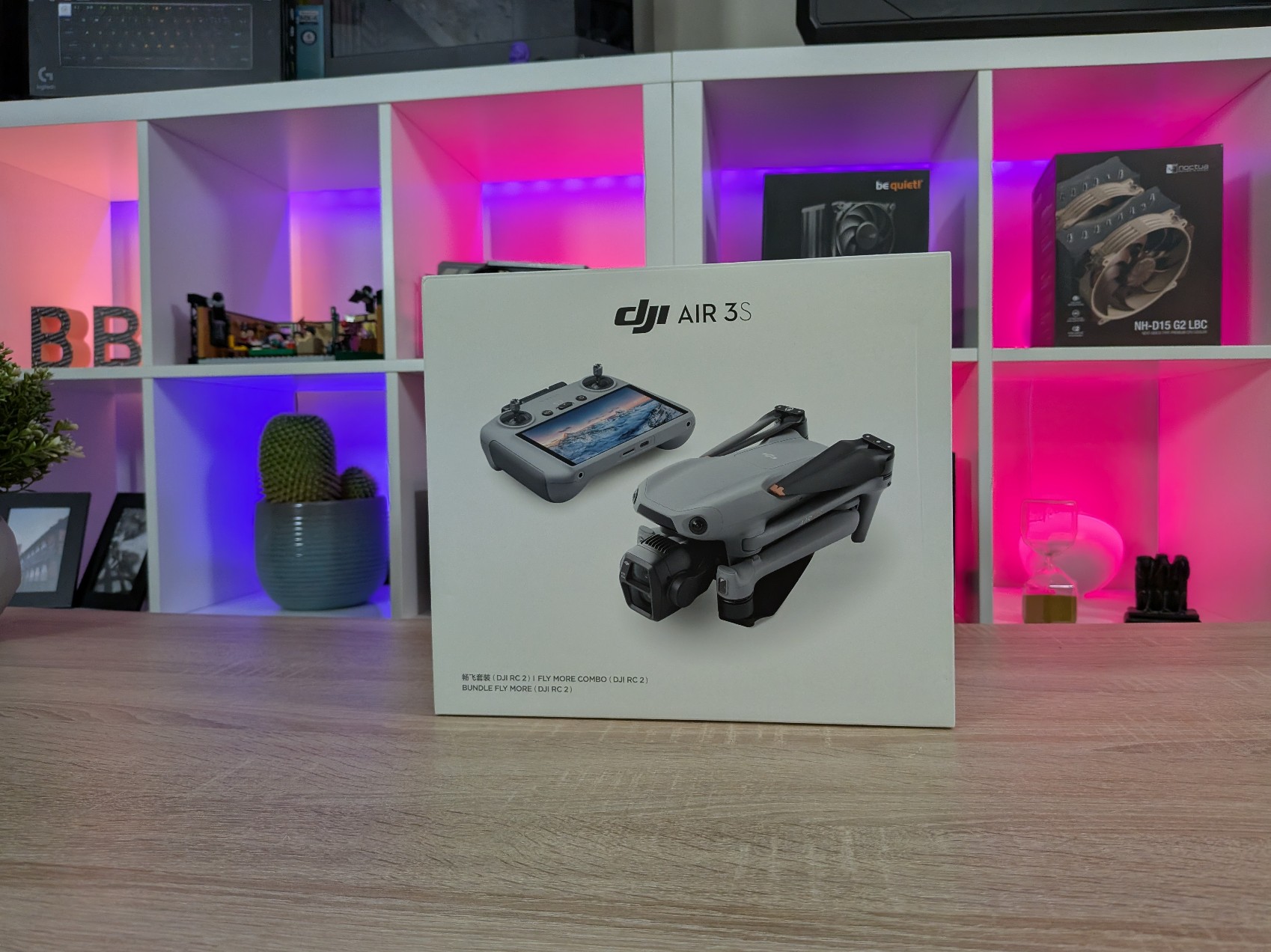
Key specifications
- Takeoff Weight: 724 g
- Max Flight Time: 45 minutes
- Internal Storage: 42 GB
- Image Sensor:
- Wide-Angle Camera: 1-inch CMOS, 50MP Effective Pixels
- Medium Tele Camera: 1/1.3-inch CMOS, 48MP Effective Pixels
- Lens
- Wide-Angle Camera
- FOV: 84°
- Format Equivalent: 24 mm
- Aperture: f/1.8
- Focus: 0.5 m to ∞
- Medium Telephoto Camera
- FOV: 35°
- Format Equivalent: 70 mm
- Aperture: f/2.8
- Focus: 3 m to ∞
Above are some of the key specifications. The complete list of specifications for the DJI Air 3S is of course much longer and can be found on DJI here.
A tour around the DJI Air 3S
When we look at the DJI Air 3S, there is not much new under the sun in terms of design and execution. Here DJI keeps the style that has become established from DJI in relation to their consumer drones.
Build quality and materials are a well-known high DJI quality. It is clearly one of the things that, along with their cameras, has made DJI such a popular drone brand.
The DJI Air 3S is of course an update of the existing DJI Air 3, which is also one of the reasons why the external shapes may not have undergone a major change.
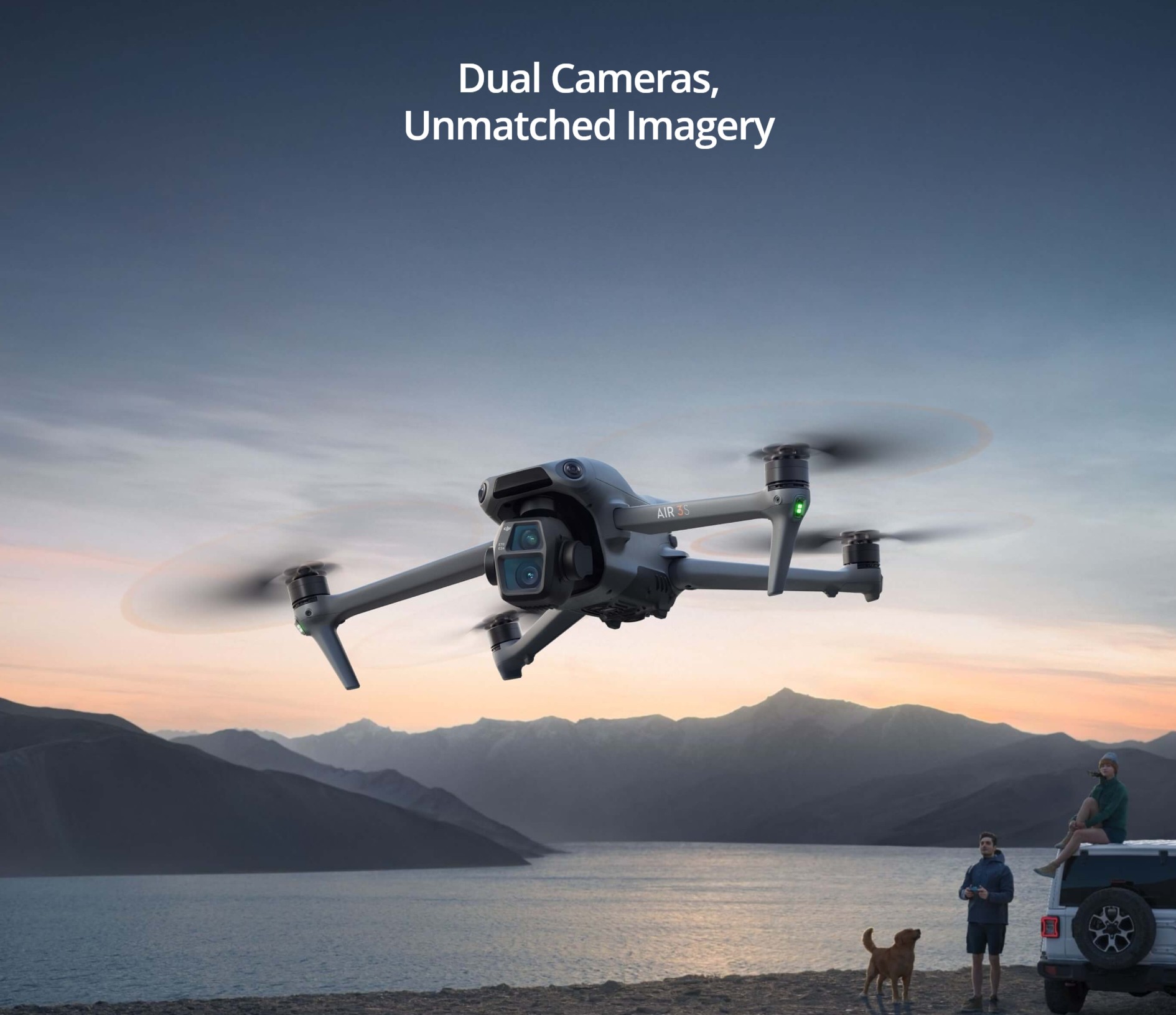
The DJI Air 3SE is a large drone in the sense that it is over the “magical” 250 grams, which is the limit where the regulations are more restrictive in terms of where and how you can fly the drone. See more about that later.
We have received the DJI Air 3S in a Fly More Combo. This means that it comes with a lot of extra equipment. The package consists of the Air 3S drone, a DJI RC 2 controller, three batteries combined in a common charging frame and then extra accessories in the form of extra propellers. All of this is combined in a transport bag, so it is easy to have it all with you.
Like most drones in this class, the DJI Air 3S is naturally foldable, making it easier to store and carry.
The Air 3S is equipped with a host of sensors so that it can automatically detect obstacles and prevent you from flying into them. There are sensors placed all around it so that under the right conditions, it can detect obstacles all around.
The back of the DJI Air 3S houses the battery, and it's also where we find the small flap that covers the USB-C port and the SD card slot. There's 42GB of internal storage on the drone, so longer recordings will require an external MicroSD card. The internal storage has been given a solid upgrade from just 8GB on the previous Air 3 drone.
When it comes to SD cards, be sure to choose one that is fast enough if you want to record at high settings. DJI has a list of recommended SD cards on their website.
The drone's gimbal is one of the stars, and on the Air 3S it has a dual camera setup. You get a 50 MP Wide-Angle and a 48 MP Medium Telephoto Camera, which means you have a little more flexibility than a single camera setup. Here it's a fairly limited upgrade, where the Wide-Angle camera has grown from 48 MP to 50 MP.
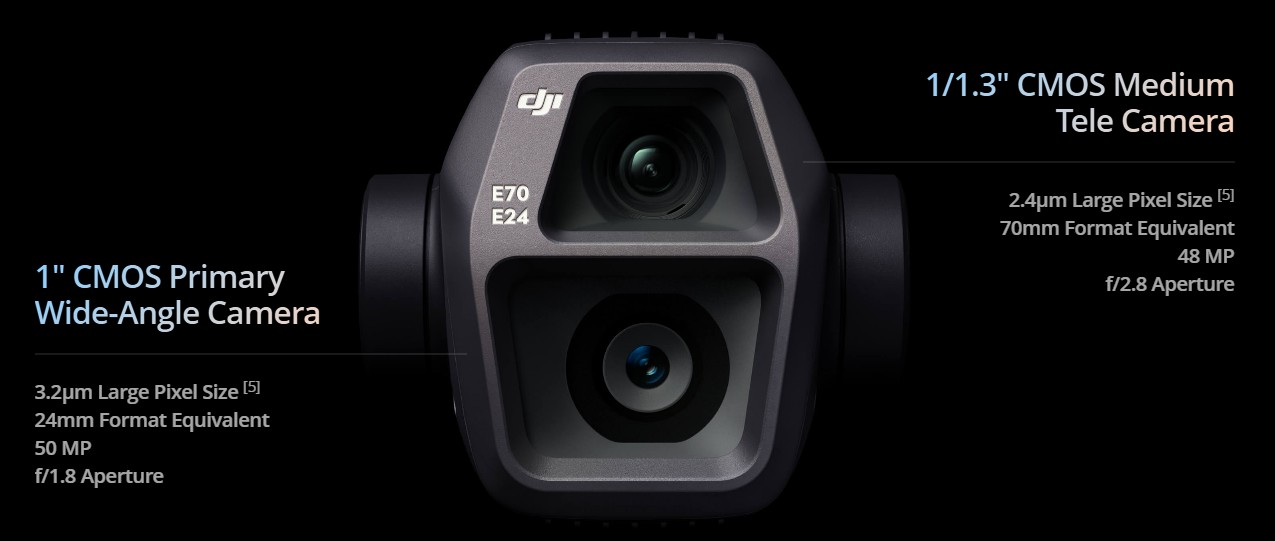
It is possible to record up to 4K at up to 120 FPS. Both cameras also support 10-bit D-Log M and 10-bit HLG color modes, giving you more flexibility if you want to color grade your footage yourself.
The controller that comes with the DJI Air 3S is the new DJI RC 2 controller. It has a 5.5” Full HD screen on the front and has been upgraded with a new, more powerful chipset. This means that it is better equipped to handle the control of your drone.
The antenna system has also been upgraded, as seen with two external antennas that can be folded out. It is a new 2T4R system, where there are two transmitters and four receivers in the controller.
All of this should lead to better video and signal transmission between controller and drone with a range of up to 20km.
As an added bonus, there is also 32GB of internal storage in the RC 2 controller.
Software
The software that a large part of the interaction with your DJI Air 3S drone will take place on is the DJI Fly app, which can be found on your smartphone, or as in our case on the DJI RC 2 device.
It is from here that you can control a large part of the functions built into the DJI Air 3S. The actual control is of course done with the two joysticks. However, all adjustments to settings and setup of which parameters you want to fly according to are done through the DJI Fly software.
The drone has a range and capabilities that are beyond the current legislation in Denmark and the EU. So it is up to you to check that the settings for, for example, altitude, etc., are set to comply with the regulations.
In the same way, you can specify how the drone should behave when it encounters obstacles in its path.
You can also set a lot of different things around the cameras and the gimbal that keeps it all stable.
During flight, there are a variety of status indicators that tell you things like how far the drone is from you and how much battery life is left.
In addition to the ability to set the drone to avoid obstacles on its own, there are also a number of other great automated functions, including automatic take-off and landing.
Every time the DJI Air 3S takes off, it stores its GPS position. So if the drone loses connection to you and the controller, or is running out of battery, it will automatically return home and land. Similarly, you can ask it to return to its starting point at any time.
The DJI Fly software seems super robust and has a wealth of features that can appeal to both beginners and more experienced drone operators.
I experienced no issues with the software during my testing. The upgraded DJI RC 2 units handle the software quickly and without any issues.
A little about Danish/EU legislation
I won't go into too much depth about the law here, but I'll just take the time to mention it. There are quite a few rules in this area, and in the worst case, you can be punished if you end up violating the rules for drone flying, whether intentionally or unintentionally.
Since the DJI Air 3S weighs over 250 grams, there are a lot more limitations on it compared to the drones we have previously reviewed.
To be allowed to fly with it, you must have passed the theoretical A1/A3 test and therefore have a drone license, which of course must also be brought with you when flying the drone. However, it can all be done digitally and is overall not super difficult to get through.
Another important detail is that you must have liability insurance that covers flying drones in this category. This insurance must be able to cover an insurance sum of up to 7 million kroner, which is no small thing.
There are also a lot more restrictions on where you can fly compared to the smaller drones under 250 grams.
With the heavy drones in this class, you must maintain a significantly greater safety distance and you are not allowed to fly in an area where there are unauthorized persons. This means that all flying in urban areas will in most cases be excluded or at least very limited without special permission.
You can get slightly fewer restrictions by taking the more comprehensive A2 Drone License. However, this requires you to pass a theoretical test at a test provider approved by the Danish Transport Authority.
There is also a practical self-learning, where you have to familiarize yourself with the drone you want to fly, and a number of practical maneuvers you have to go through. Here there is no test you have to pass, but it is subject to control and the possibility of being taken for control, see below from the Danish Transport Authority:
“The practical self-training involves some specific maneuvers that must be completed before you can declare that you have completed the practical self-training. The self-training is subject to supervision, and you may be selected for inspection if the Danish Transport Authority finds it necessary. If we find it unlikely that you have completed your practical self-training, we will revoke the remote pilot's certificate of competency. “
These more comprehensive rules naturally mean that there are a lot more restrictions on how and not least where you can use a drone like the DJI Air 3S. These are details that you should take into consideration before you embark on purchasing and flying the drone.
In addition to the above rules, you must of course still be aware of the areas where there may be restrictions on flying, even if they initially meet the other rules regarding distance, etc.
You can find much more about the rules and the different types of certificates on the Danish Transport Authority's website www.droneregler.dk
It is worth spending some time to familiarize yourself with the rules for drone flying. It is not exactly an easy web of rules to understand. Through other work, I am used to reading legal texts and finding my way around public notices, and it took me a while to figure things out. So if you want to be on the safe side, you should spend some time researching the law.
Drone regulations are basically common European regulations and apply throughout the EU. However, there may be additional regulations in certain countries, so be aware. Outside the EU, there may also be special regulations that you should be aware of.
Test
The DJI Air 3S is an impressive drone that combines advanced technology with ease of use and solid performance. As with previous tests of DJI drones, I have also experienced some limitations in the testing options due to the strict rules for drones over 250 grams. This meant that I primarily flew on my own land and over my neighbor's fields with permission, to be sure that I did not come into conflict with the rules and unauthorized people or vehicles.
The DJI Air 3S flying experience is both intuitive and stable. The drone is equipped with a number of intelligent features that make it easy to handle, even for less experienced pilots. The automatic take-off and landing function worked flawlessly during my test, and the Return to Home system safely returns the drone to its starting point if the connection is lost, the battery level becomes critically low, or you choose to do so.
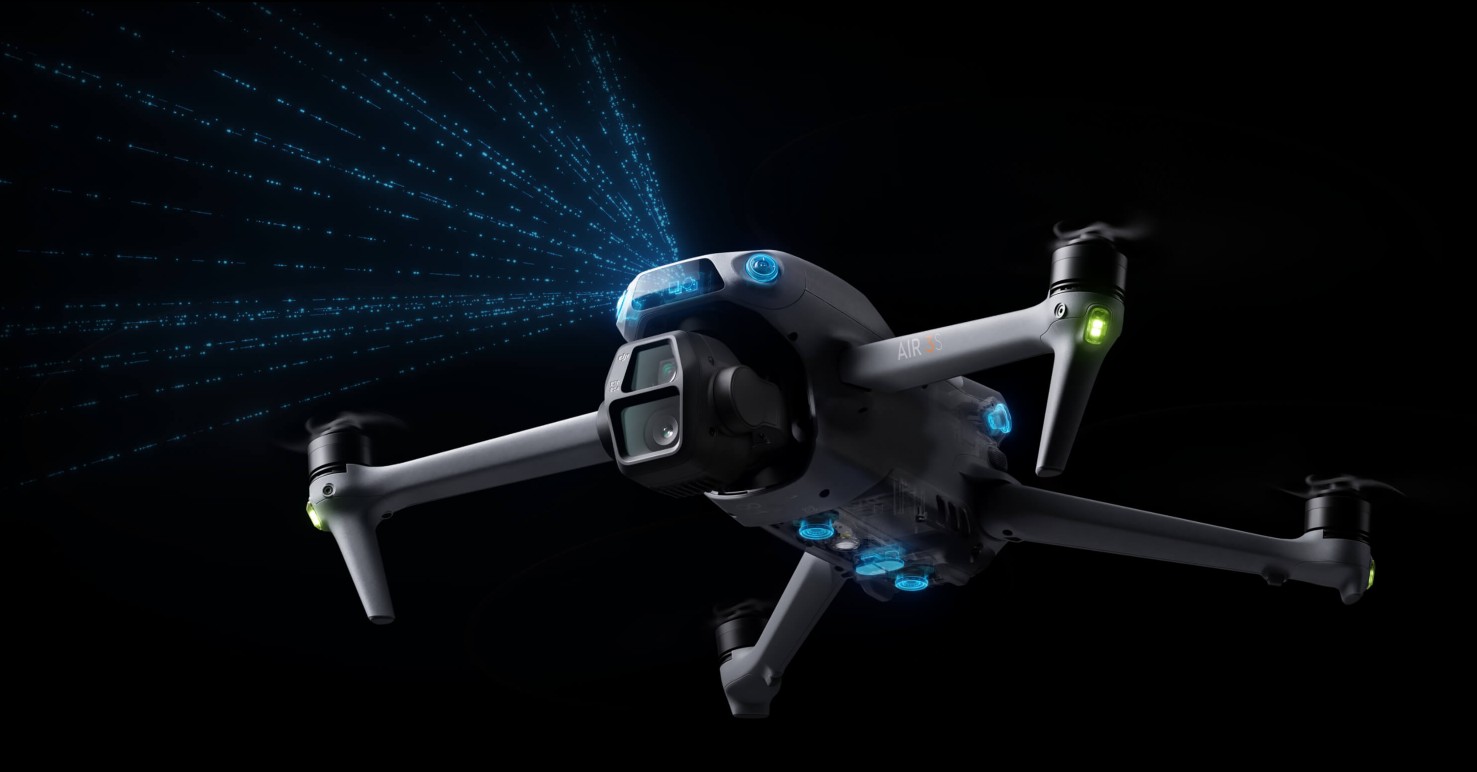
One of the most impressive features is Object Avoidance, which uses multiple sensors to detect obstacles and either slow down or navigate around them. However, it should be noted that this feature is only active up to a speed of 12 m/s and is deactivated in Sport Mode. During my tests, the system worked flawlessly – regardless of whether the drone approached trees, house walls or volunteer test subjects.
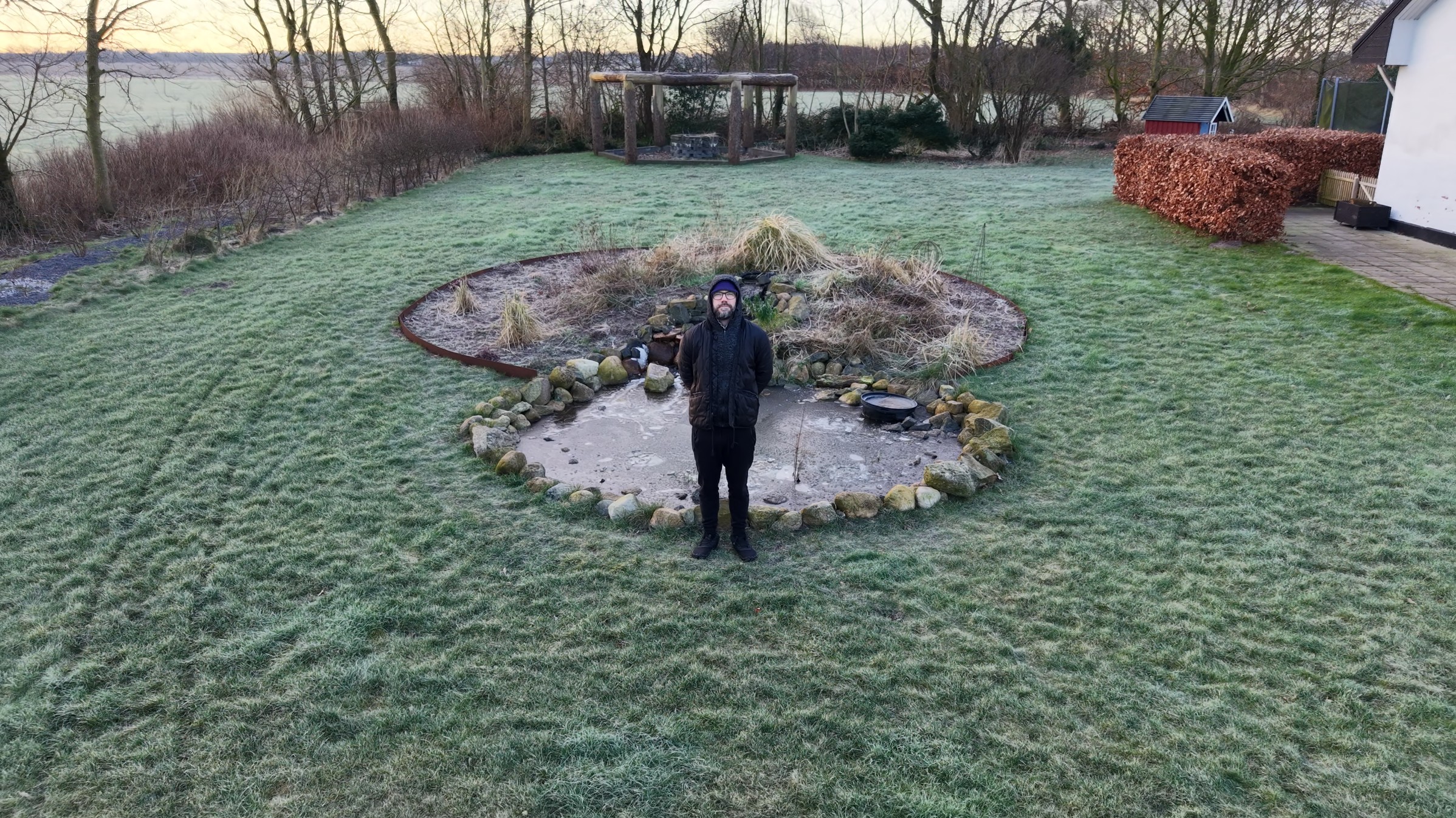
DJI promises a flight time of up to 45 minutes, and that promise is surprisingly true. Even with a little wind and varying flight patterns, I managed to get close to the stated time. The flight characteristics are impressively stable, the drone keeps its course precisely, even in moderately windy weather, and delivers silky smooth footage, even when moving quickly across fields and open terrain.
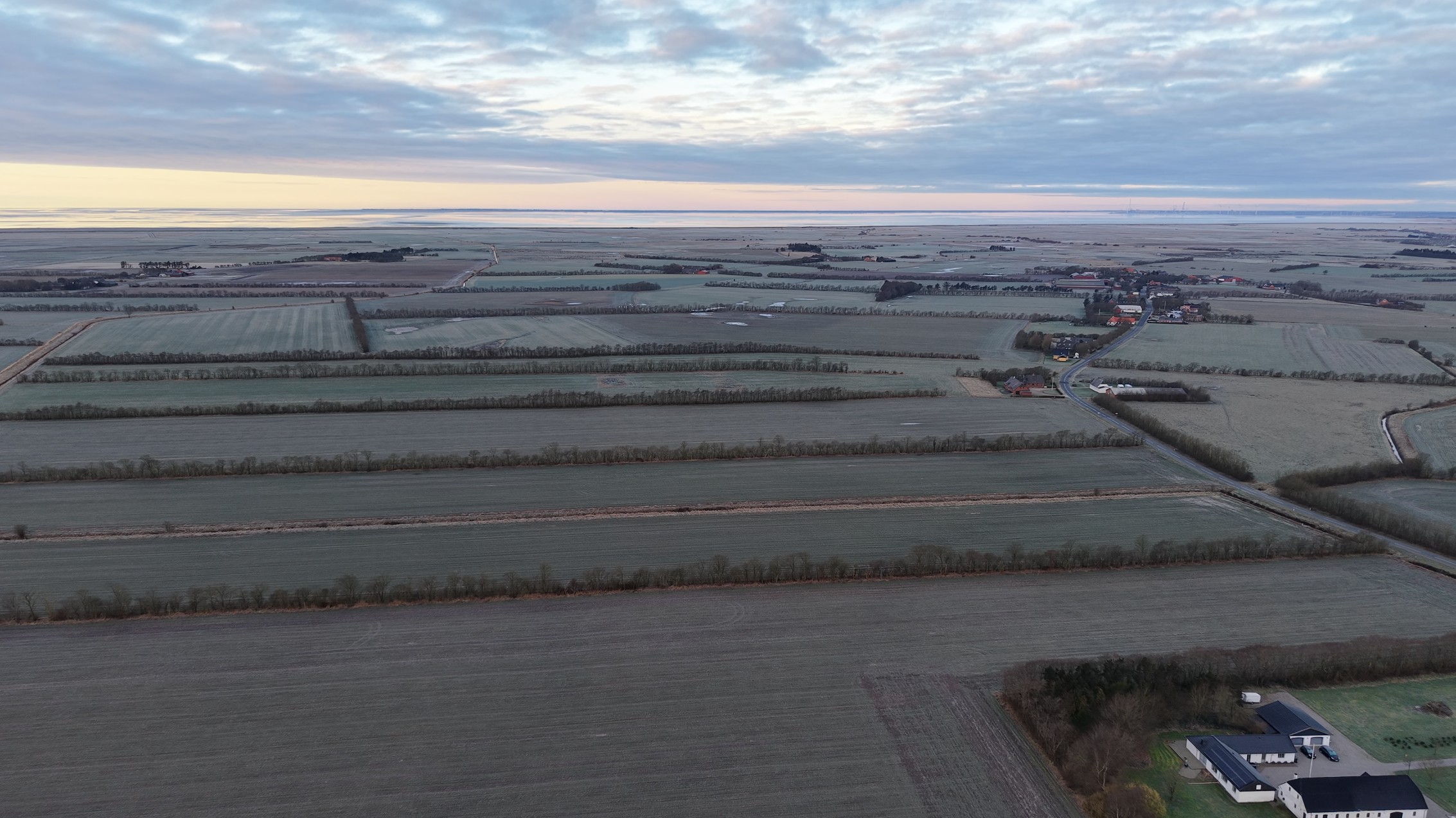
The camera in the DJI Air 3S is a chapter in itself. With two lenses, a wide-angle and a telephoto lens, you get great flexibility in your recordings. Video recordings can be made in up to 4K resolution with a bitrate of 150 Mbps.
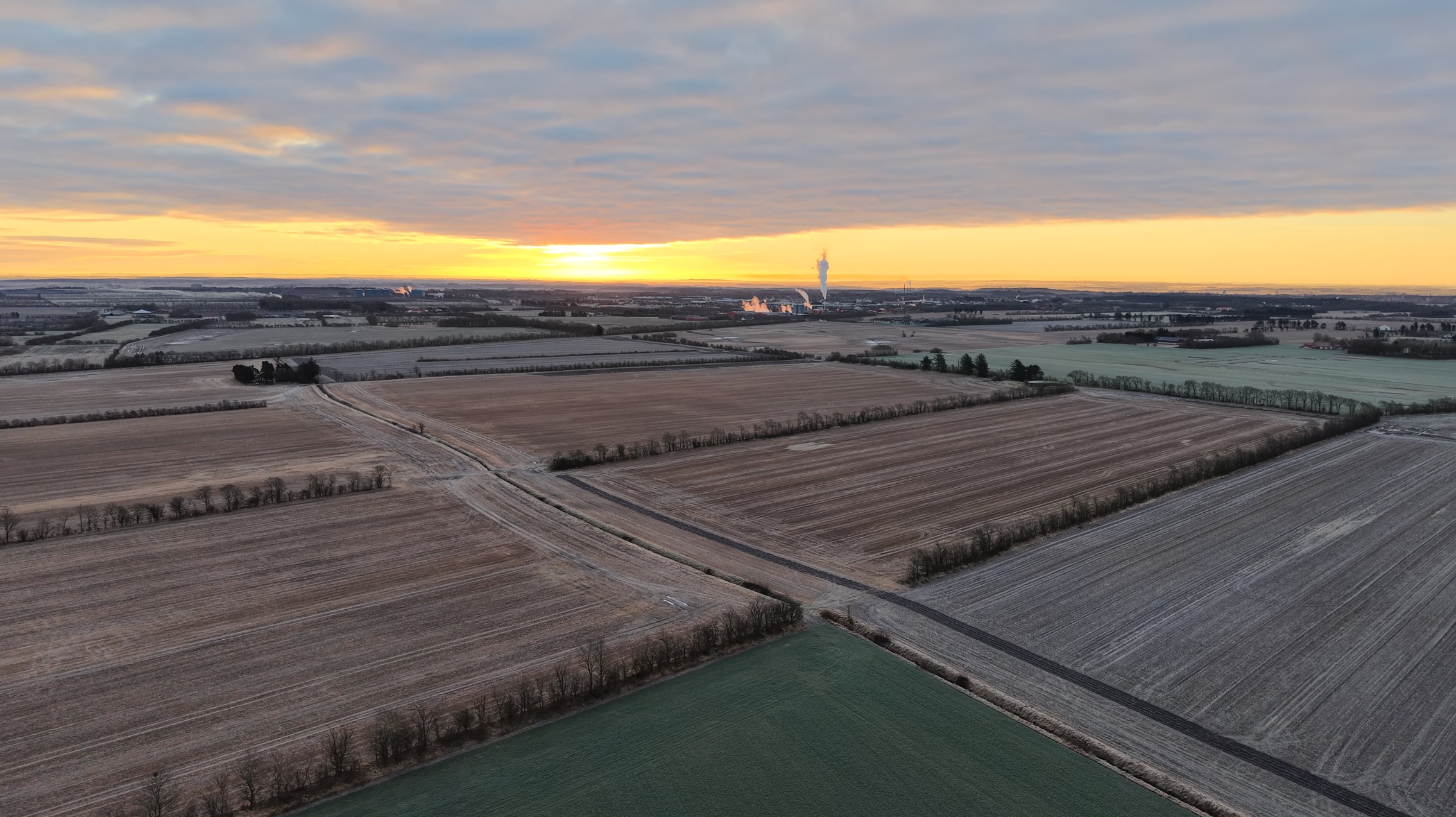
In addition, the drone supports 8-bit color depth and 10-bit when using HLG or D-Log M, which provides greater dynamics in the recordings. The telephoto lens with 3x optical zoom makes it possible to capture details from a distance without compromising on quality.
I can't help but praise the images I've gotten from my time with the DJI Air 3S. However, I wouldn't dare claim that I can see a big difference between the shots I've taken on the original Air 3 and then the Air 3S here.
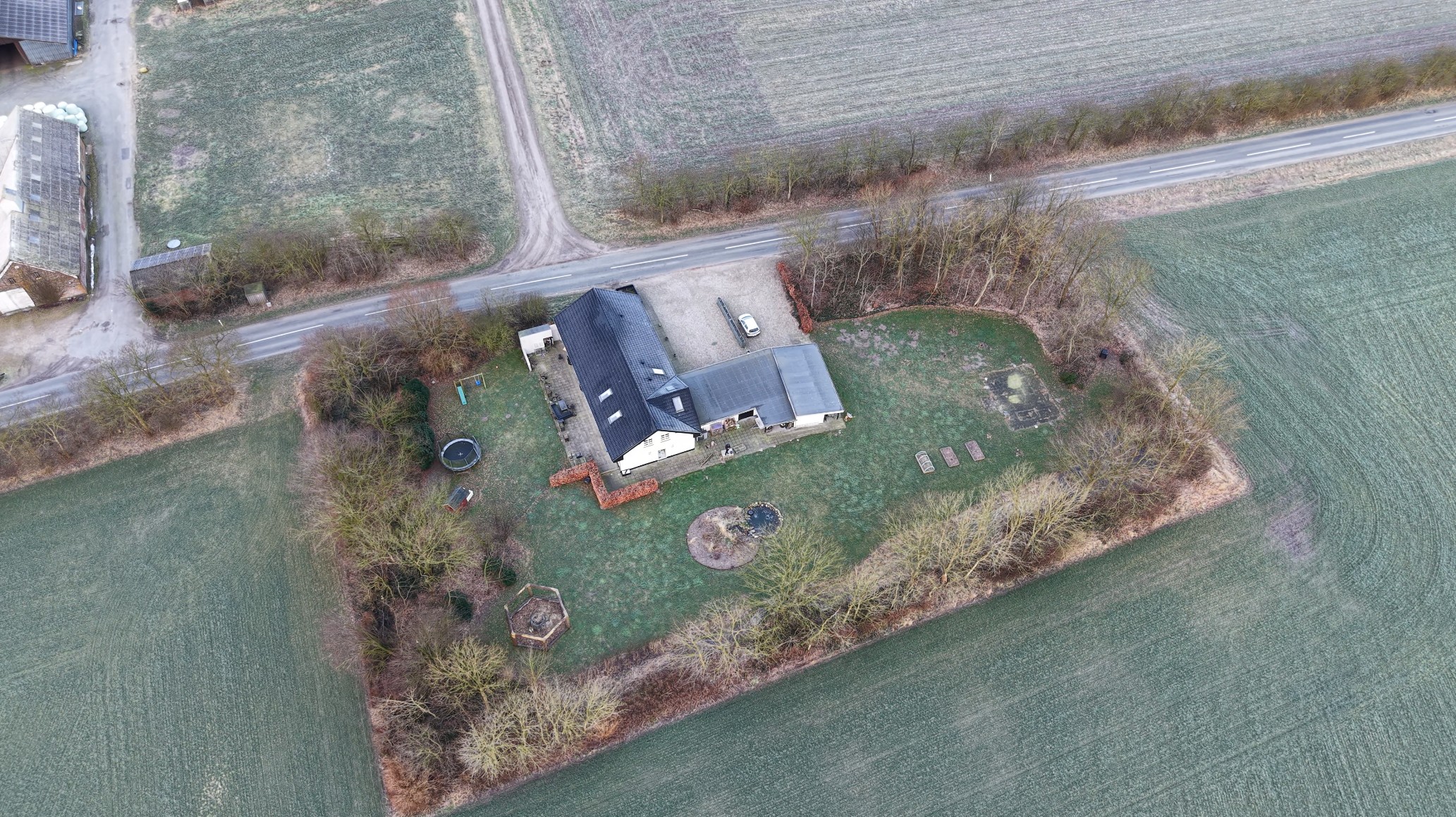
As previously seen in DJI drones, the Air 3S offers a range of smart shooting options, such as Dronie, Rocket and Circle. In addition, you can plan routes via waypoints, which is perfect for time-lapse footage where you want to document changes over a longer period of time.
Price
At the time of writing, I can find the DJI Air 3S in the Fly More Combo that I have visited with a total price of 2.000$.
If you can do with less, you can get the Air 3S drone with the smaller RC-N3 controller for a price of 1.500$.
Both prices fall nicely in line with the prices we saw with the original Air 3.
Conclusion
The DJI Air 3S impresses with its combination of ease of use, stable performance and excellent camera features. The many automatic functions make it suitable for both hobbyists and semi-professionals who want high image quality and easy operation.
The only real obstacle is the rules for drones over 250 grams, which restricts flying quite a bit. This means you need to familiarize yourself with the rules before you pull out your credit card.
We land with a final score of 9 for a nice update to an already solid drone from DJI.
Advantages:
- Fantastic flight characteristics
- The RC 2 controller is top notch
- Top-class cameras
- Good flight time
Disadvantages:
- The rules for drones over 250 grams are restrictive.
Latest gadgets
-
19 Sepgadgets
-
23 Maygadgets
LaserPecker LP5 Laser Engraver
-
01 Maygadgets
Swytch launches Swytch Max+ Kit
-
10 Margadgets
DJI AIR 3S
-
03 Margadgets
Razer Wolverine V3 Pro
-
21 Febgadgets
OBSBOT Tiny 2 SE
-
13 Febgadgets
Corsair launches Platform:4
-
17 Jangadgets
Nerdytek Cycon3
Most read gadgets
Latest gadgets
-
19 Sepgadgets
DJI launches Mini 5 Pro
-
23 Maygadgets
LaserPecker LP5 Laser Engraver
-
01 Maygadgets
Swytch launches Swytch Max+ Kit
-
10 Margadgets
DJI AIR 3S
-
03 Margadgets
Razer Wolverine V3 Pro
-
21 Febgadgets
OBSBOT Tiny 2 SE
-
13 Febgadgets
Corsair launches Platform:4
-
17 Jangadgets
Nerdytek Cycon3






